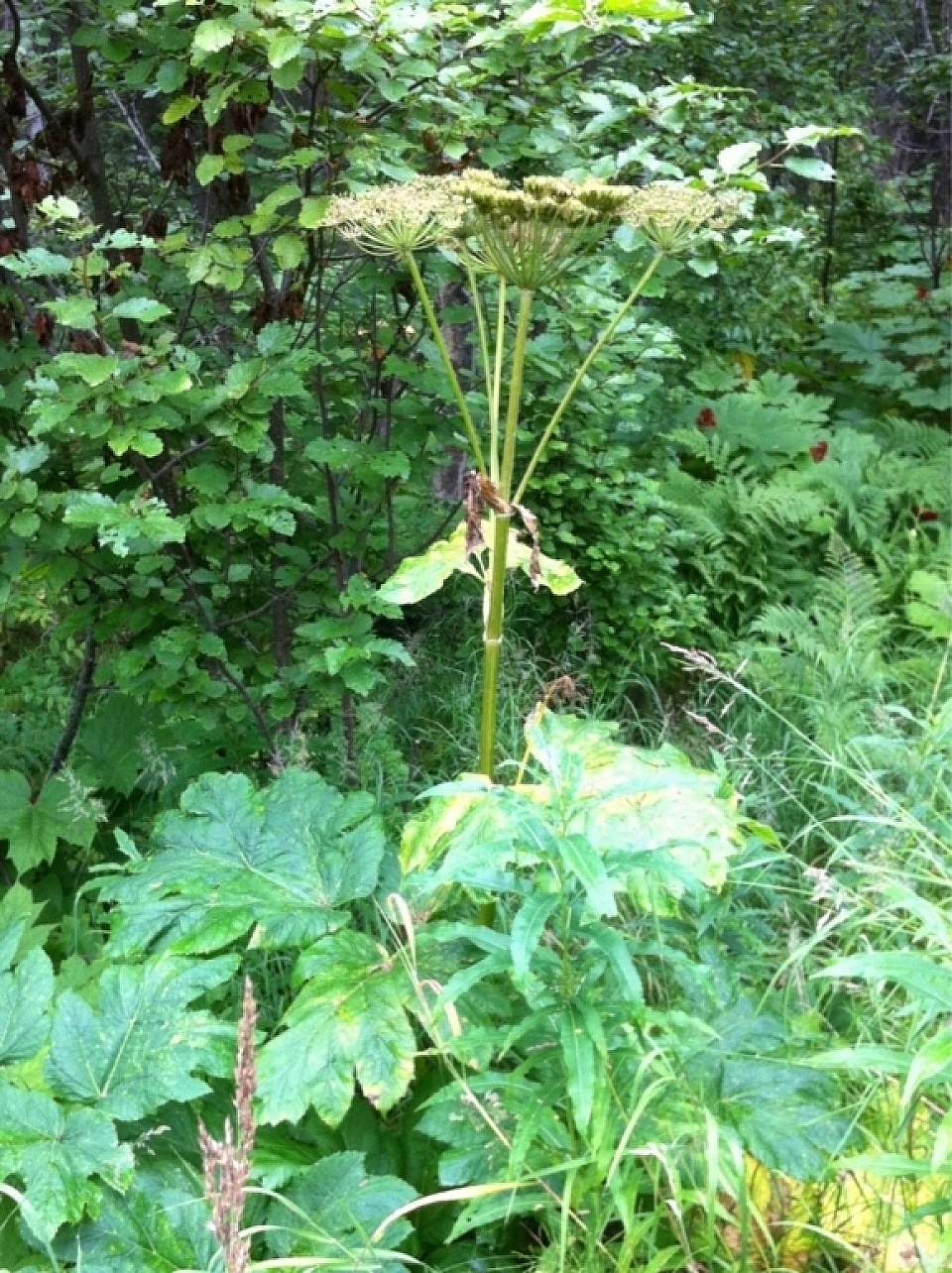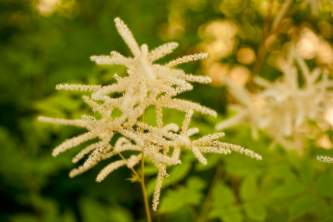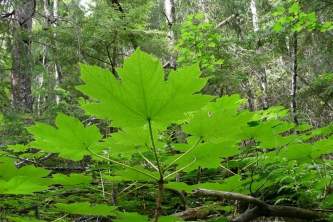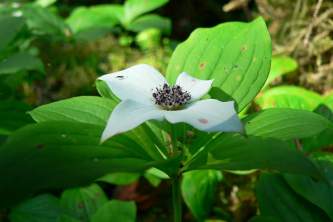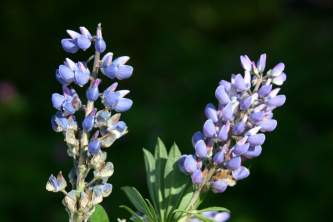Cow Parsnip
Heracleum lanatum
Apiaceae/Carrot Family
Cow Parsnip grows in moist fields, woodlands and alpine meadows. It is a tall (5-8') plant with large hollow stems and very large maple-lead shaped leaves that are deeply divided into three. The leaves and stems have conspicuous hairs. The leaves have a striking resemblance to the Devil's Club, another understory plant of Alaska, but Cow Parsnip isn't covered in thorns. The flowers are tiny, white, and arranged in flat-topped clusters at the top of each thick stem. If you find this plant while hiking, be careful about brushing against it because the juices (and compounds called furanocoumarins) react with sunlight, especially in people with light sensitive skin, and cause blistering. If you do get the juices on your skin, wash it off as soon as possible. Cow Parsnip was eaten as a green vegetable by most indigenous groups. The young stems and leaf stalks, before the flowers matured, were peeled and eaten raw or occasionally boiled and were sometimes called "Indian Celery" or "Pushki".
